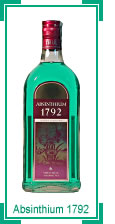
Interestingly, those that think thujone – the allegedly pyschoactive ingredient in absinthe – was the only reason for the prohibition of absinthe, should think again. It was also about love!
End of a Dynasty
War has not been kind to the descendants of Henri-Louis Pernod, that Frenchman who in 1797 gave to the world the aperitif known as absinthe. Henri-Louis used the formula of a Dr. Ordinaire, who was celebrated up & down the Alps for cures effected with mountain herbs. One of these herbs was wormwood, an excellent stomachic, which by the time of World War I had also acquired a reputation as an aphrodisiac, thereby helping to enrich the firm of Pernod Fils, leading manufacturer of absinthe. In 1914 the publisher of a small Paris newspaper started a campaign to prohibit absinthe, based on the popular beliefs that: 1) wormwood is an aphrodisiac; 2) continued use of aphrodisiacs produces impotence; 3) France is a nation of absinthe sippers; 4) therefore France as a nation is becoming impotent. Frenchmen’s mortal fear of impotence, coupled with war hysteria and a falling birth rate, put the campaign over with a bang. Absinthe was banned in France on March 16, 1915. Pernod continued to make absinthe in Tarragona, Spain, but few countries allowed its consumption.
After the war another member of the Pernod dynasty, Jules, whose firm was called Pernod Pere et Fils, concocted an aperitif that tasted much like absinthe but was less bitter, contained no wormwood. This he called Pernod Anise. In 1920 a M. André Hémard produced a something that could scarcely be distinguished from Pernod Anise and called it L’Amourette. Frenchmen took to it delightedly. By 1928 the original firm of Pernod Fils was back in the business, and all three makers of wormwoodless absinthe were united in the Société des Etablissements Pernod. Their product was known in bars from Marseille to Singapore simply as Pernod. In 1938 Société des Etablissements Pernod paid its sixth consecutive 100% dividend, sold an estimated 15,000,000 bottles. Despite the absence of wormwood the French birth rate fell all through the ’20s and ’30s.
Last week France’s Vichy Government banned Pernod and all other aperitifs containing more than 16% alcohol.* Alleged reason: Pernod caused men & women to quarrel and get nervous disorders, instead of becoming loving parents.
*Automatically banning them in the U. S., which forbids the importation of alcoholic beverages prohibited in the country where they are made.
Time Magazine, Monday, Sep. 02, 1940
Absintheur’s Question. Who said: “Absinthe is the aphrodisiac of the self. The green fairy who lives in the absinthe wants your soul. But you are safe with me.” ?



















